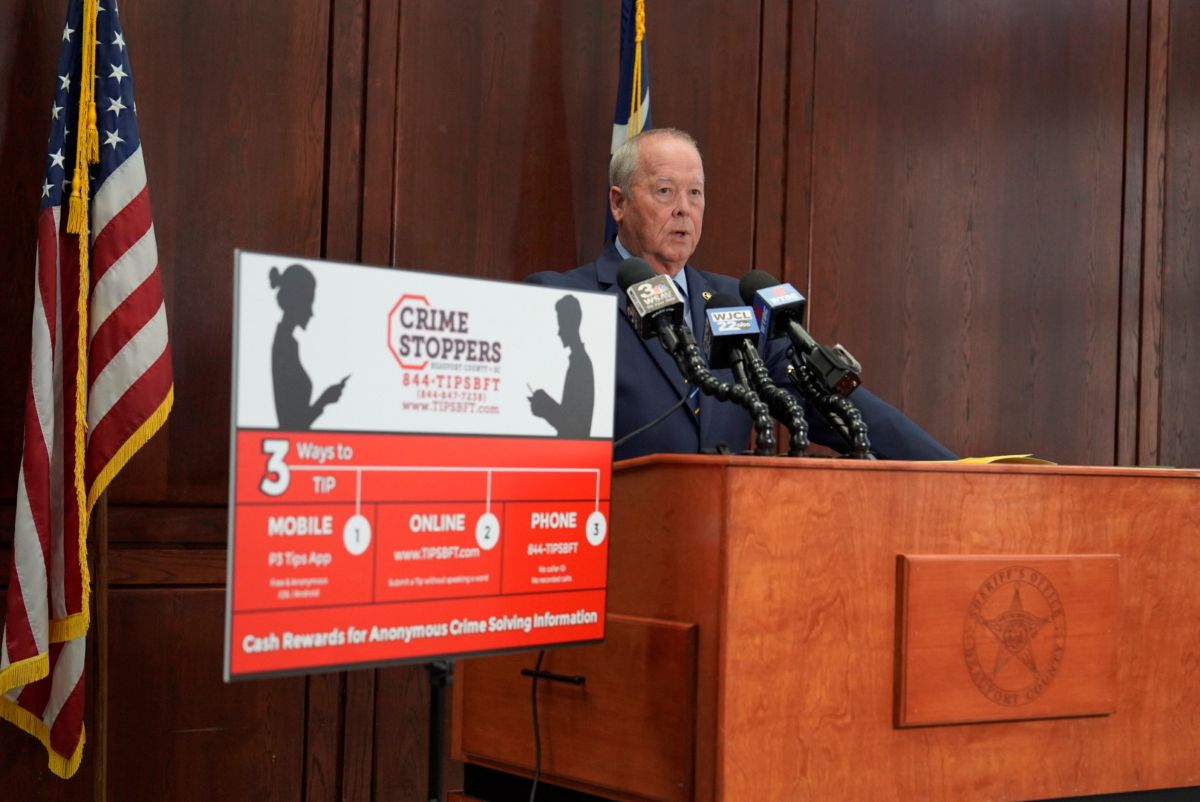COVID-19 crisis will affect protection efforts
By the S.C. Department of Natural Resources
The sea turtle season began locally in Beaufort County on Monday, May 4 when the Friends of Hunting Island Turtle Conservation Team found its first loggerhead turtle nest.
For now, beach searches are being done only by day leaders. Volunteer training and volunteer searches will be announced in the near future on the Friends of Hunting Island web page.
South Carolina Department of Natural Resources (SCDNR) biologists reported the start of sea turtle nesting statewide with a nest laid April 30-May 1 on Lighthouse Island.
Located within the Cape Romain National Wildlife Refuge, the site of South Carolina’s densest sea turtle nesting, the loggerhead nest was discovered by U.S. Fish and Wildlife sea turtle technician Billy Shaw Friday morning.
South Carolina’s official sea turtle nesting season runs from May 1 to Oct. 31 each year, so this year’s season begins right on time after an early start in 2019. Nesting in South Carolina typically starts soon after Georgia’s first nesting report, which occurred on Saturday, April 25.
“Staff and volunteers are very excited to celebrate the official opening of sea turtle season,” Michelle Pate, SCDNR sea turtle biologist, said in a release. “This year has been an especially difficult one for all of us globally, and we welcome the seasonal return of these ancient creatures back to South Carolina’s nesting beaches.” Pate added that she expects a productive season, though not reaching the level of nesting seen in 2019.
In 2019, South Carolina celebrated a record-breaking season in which sea turtles laid the greatest number of nests ever recorded in a season. Volunteers and biologists counted 8,802 nests in South Carolina, which represented a 37 percent increase over the previous record set in 2016.
Last season also followed an unusually low year in 2018, in which only 2,767 nests were counted due to cyclical nesting patterns. Because nesting exacts a high energy toll on the large reptiles, female sea turtles do not come ashore to lay eggs every year. This pattern results in nesting fluctuations from year to year, but as a whole, sea turtle nest numbers across the Southeast have trended up over the past decade. This makes biologists across the region optimistic that these threatened reptiles are beginning to recover after several decades of conservation efforts.
The ongoing COVID-19 global health crisis is expected to reshape sea turtle nest protection efforts this year. Typically, more than 1,300 volunteers from 30 different nest protection programs spend the summer months patrolling South Carolina’s beaches each morning for crawls, the telltale tracks left by a female sea turtle as it trundles ashore.
Volunteers and biologists meticulously identify, count, and protect these nests throughout the season until they hatch, after which time nests are inventoried to collect additional data. Due to current guidelines meant to safeguard employee and community safety, the volunteer network has been restricted until beaches across the state fully reopen and state employees are permitted to fully return to the field.
Four sea turtle species nest on South Carolina beaches: loggerheads, greens, Kemp’s ridleys, and leatherbacks. Loggerhead nests comprise the vast majority of the state’s total number each year, but 2019 saw 20 green sea turtle nests and one Kemp’s ridley nest (only the fourth in the state’s history). All four sea turtle species are classified as endangered or threatened and are protected under the Endangered Species Act, in addition to local and state ordinances.
Sea turtle clutches average 120 eggs and hatch after approximately 60 days. Nesting females may remain in South Carolina waters and continue to nest every two weeks, laying up to six nests per season. Throughout this stressful time, the turtles also abstain from eating.
South Carolina beachgoers can help the state’s sea turtles by keeping beaches clean, turning beachfront lights out to avoid disorienting turtles, and giving all sea turtles and nests a wide and respectful berth when encountered on the beach.
Sea Turtle Nesting Season Reminders
Report all sick/injured/dead sea turtles and nest disturbances to the SCDNR at 1-800-922-5431 so that staff/volunteers can respond as soon as possible.
Respect boating laws and boat cautiously, especially in small tidal creeks where sea turtles like to feed. Boat strikes have emerged as the leading cause of death for sea turtles in South Carolina.
Keep artificial lights off the beach at night during nesting season – this includes beachfront property lights and flash photography, which can disorient nesting mothers and hatchlings.
Always respect sea turtles by observing them from a distance on the beach. Individuals that violate federal law by harming or interfering with sea turtles or their nests can be subject to civil penalties of up to $25,000 and up to a year’s imprisonment.
Keep beaches and oceans clean by avoiding single-use plastics. Plastic bags and balloons are among the most common trash items found on South Carolina beaches and can cause injury or death when sea turtles mistake them for food.
Promote and support programs for continued conservation of sea turtles in South Carolina





